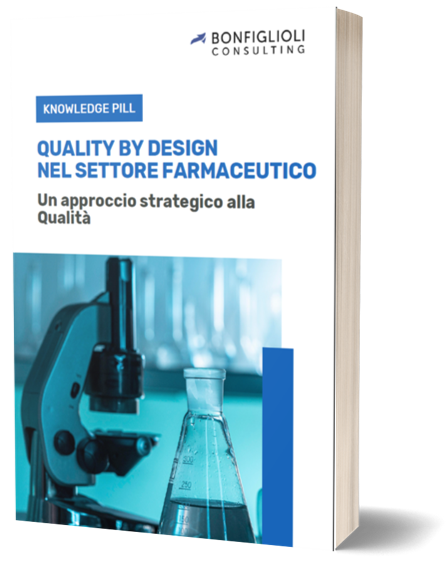A strategic approach to Quality in the pharmaceutical industry
The concept of Quality by Design (QbD) represents a milestone in the evolution of Quality Management, especially in the pharmaceutical industry. This approach, deeply rooted in the theories introduced by Joseph Juran in his famous Quality Control Handbook of 1951, promoted the idea that quality should be "designed" within the process, rather than verified through ex-post Quality Gate checks. Juran introduced, thus, the concept of Built-in Quality, arguing that Product quality depends on processes designed to be robust and efficient, not from post-trial monitoring.

Joseph Juran is known for his reinterpretation of Pareto's law, one of the seven basic tools of quality management. According to Juran, in fact, it is necessary to separate the "vital few" (the few really important things) from the "trivial many" (the many less important things), in quality management. However, his most significant contribution was in the area of integrated quality management, the basis of the structure of the current ISO 9001 standards. He suggested a strategic approach divided into three key moments, referred to as the Quality Management Trilogy:
This systematic approach enables organizations to move from emergency management (firefighting) to proactive quality management, where operational efficiency improvement plans, such as Overall Equipment Effectiveness (OEE), are integrated into the process. The process, therefore, becomes inherently efficient and therefore does not need to be constantly monitored.
In the pharmaceutical context, the application of the Quality by Design has gained particular prominence since 2008, with the publication of the International Council for Harmonisation of Technical Requirements for Pharmaceuticals for Human Use (ICH) guidelines Q8, Q9 and Q10. In fact, the ICH calls on pharmaceutical companies to ensure that the quality of the product made is consistent in a robust manner. Products must be assured in quality, efficacy, and safety based on process conditions and not because they are 100% controlled. These guidelines do not refer prescriptively or directly to the methodologies to be applied, leaving it up to companies to choose the best path.
The Quality by Design approach and its tools enable constant process planning and control to design quality natively from the process and, thus, ensure product quality.